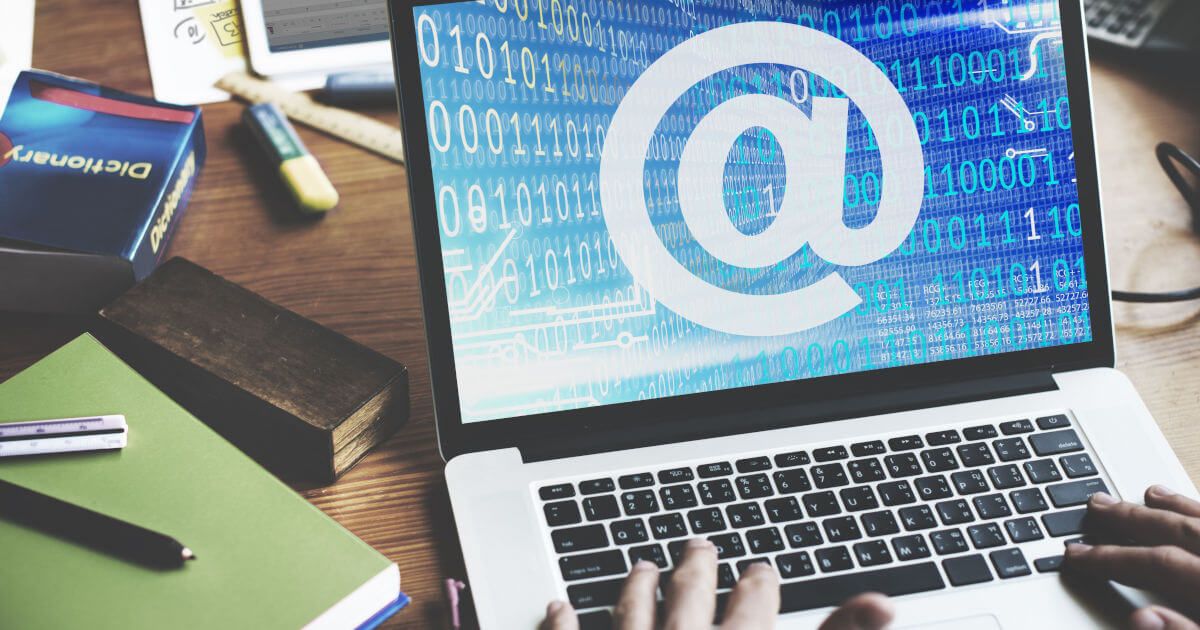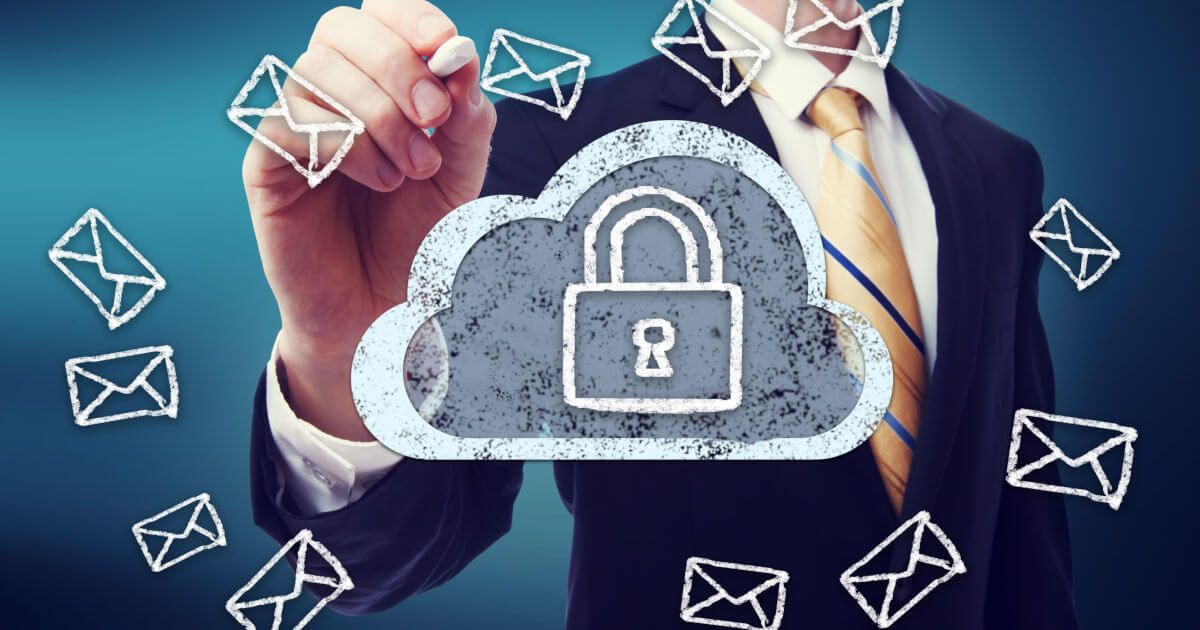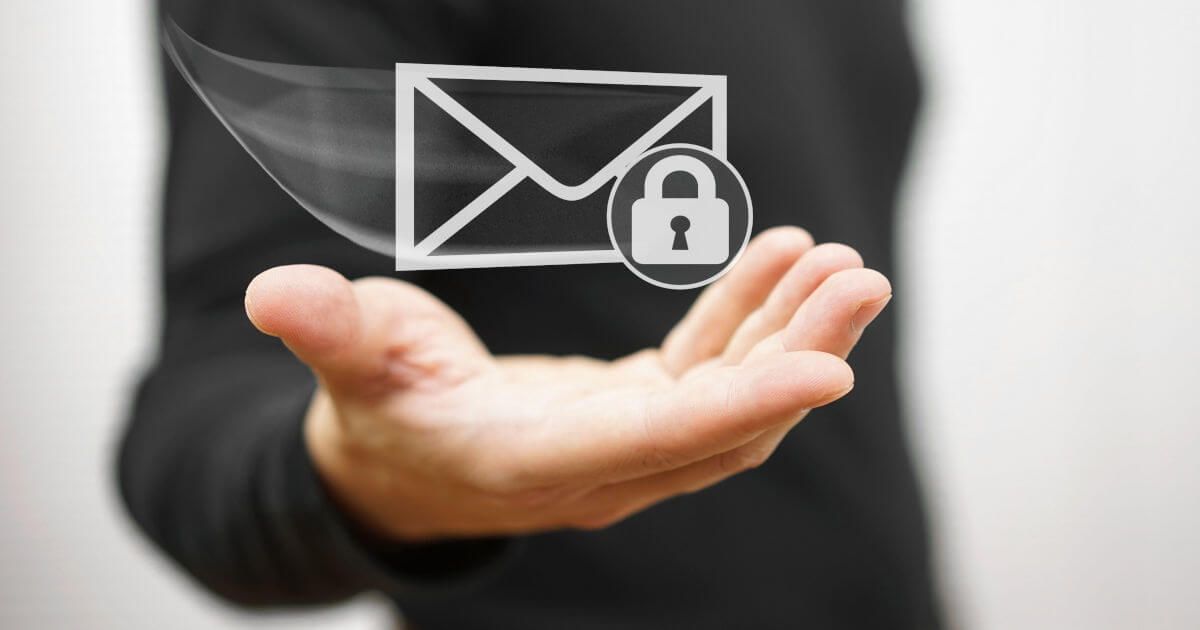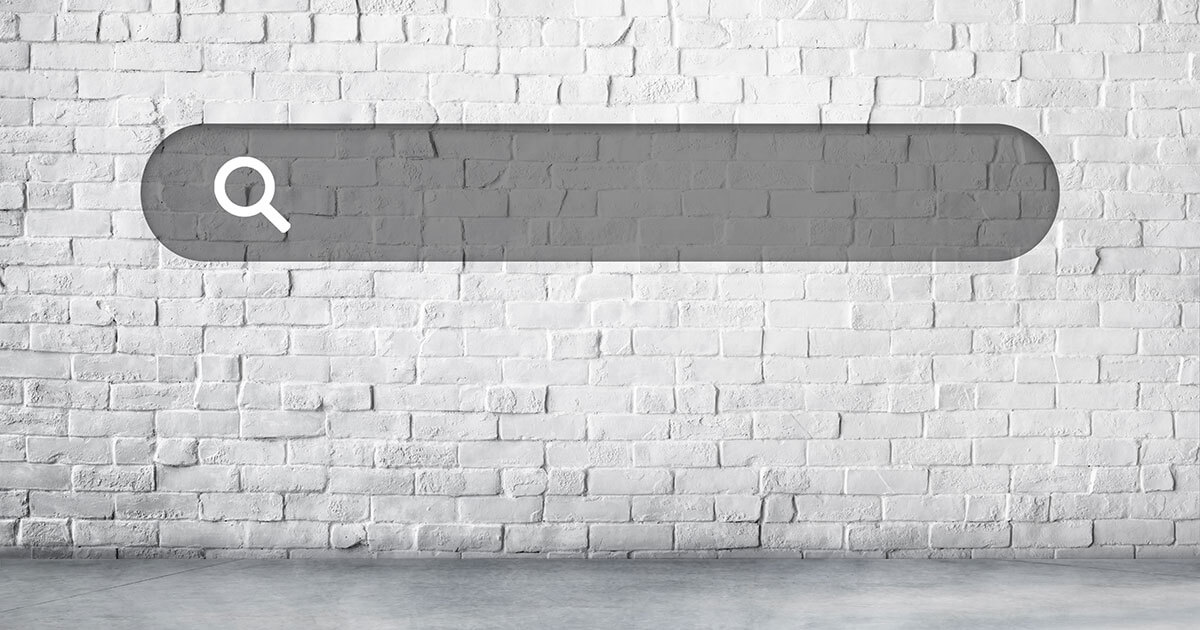Email etiquette rules every professional should follow
People have been sending e-mails since the 1980s and the numbers keep rising. There’s an art to writing e-mails, for example, when writing business e-mails, you shouldn’t use fluffy language, but rather be direct and get straight to the point. A well-written e-mail could make all the difference, so it’s worthwhile to incorporate some principles of e-mail etiquette.
Important dos and don´ts of email etiquette:
- Do have a clear subject line, which refers to your message
- Don´t forget your signature
- Do use a professional salutation
- Don´t shoot from the lip
- Use exclamation marks sparingly
- Do briefly introduce yourself
- Don´t use humour
- Do respond in a timely manner
- Do refrain from sending one-liners
- Do avoid using shortcuts to real words, emoticons, jargon or slang
- Do not send too many attachments, and provide a logical name
Professional Email Address & Personal Domain Name
Give the right first impression with a custom email address and a free matching domain name!
Business or private?
How you design your e-mail depends on the purpose of the message and your relationship with the recipient. E-mails to good friends or family members are a lot more informal than e-mails you would send to business associates. A pattern will form with this group of acquaintances and language will be used that maybe only people in this group will understand. It could even be considered rude if you were to converse with a stranger in this way. Special e-mail etiquette is therefore needed when writing on a more professional level.
E-mail etiquette: what to consider when writing business e-mails
If you want to be taken seriously and make a good impression on whoever is receiving your e-mail, you should follow the general rules of e-mail etiquette. Two areas are important: on the one hand, content and text design, and on the other hand, the formal-technical aspects, which are important for sending the e-mail. The first point generally applies to every business letter – whether electronic or postal. The second category of rules is related to the medium and its features, and therefore only applies to e-mails.
Rules for text content and text design
For your e-mail to come across positively to your recipient, you should consider these points when writing:
Text length
In business writing, the following generally applies: be as informative as possible but at the same time keep it as short as possible. Most people receive countless e-mails every day and wading through them can take a while. The recipient’s day would be made a lot easier if all e-mails just got straight to the point by only providing the essential information. Make sure, however, that your e-mails don’t appear rude by being too short or lack accuracy due to missing information.
Politeness
Every letter should begin with addressing the recipient. This still applies even with digital communication, although in using instant messaging services (e.g. WhatsApp or Facebook Messenger), SMS or chats, many users are used to other standards of written language. Using these services, people communicate in an informal way, just as they would if they were face to face. E-mails, however, follow another form of etiquette, and therefore need to be addressed and concluded in a suitable fashion.
It’s important to pay attention to the hierarchy and degree of confidentiality. The safe choice is to remain with 'Dear…' and 'Best regards'. Don’t try to come across as too friendly if you really don’t know the recipient well, as it may come across as unprofessional.
Grammar and spelling
Nowadays, e-mails are composed a lot faster than they used to be. This is because smartphones and laptops enable us to write them on the go. You could conjure up a quick one on the train to work, but your lack of concentration could lead to typos, incorrect sentence constructions, and wrong grammar. This is no excuse, since you should always check over what you’ve written before sending it as a way of showing respect to the recipient. E-mails full of mistakes make it look like the sender doesn’t care, so why should the recipient care about what you’ve written? Many e-mail applications now come with an integrated spell check, but don’t rely on it too much.
even when communication though e-mails, punctuation retains its meaning. Using several exclamation marks next to each other isn’t going to do anyone any good. One is enough to express urgency and anything more comes across as pushy or unfriendly.
Formatting
Every text requires reasonable formatting so that the reader can understand it. This starts with the use of paragraphs, through which you structure the content and create connections. The same applies to bold and italicised words. Highlighted words stand out and show the reader where the most important passages are. But this only works if they are used sparingly. When writing e-mails, authors should make sure that the font, colour, and size are legible. The aim of text formatting is to make it easier for the recipient to read it.
Abbreviations
Abbreviations in e-mails should be used sparingly. They need to be decoded if they are particularly unusual, after which the reader needs to piece together words from the letters, which isn’t always easy compared to the usual abbreviations such as 'etc.' and 'e.g.'. Some abbreviations are so specific that the recipient might not even be familiar with them. Shortened versions of words can make the e-mail seem abrupt and alienate the recipient if they have no idea what they stand for. This isn’t the best way to get them to take your e-mail seriously.
Tonality
When exchanging e-mails, it’s impossible to get your tone of voice across. The reader can’t recognise whether you’re being sarcastic or joking, which is why smileys and emojis can help in chats, but these are obviously not used in business e-mails. It is therefore a good idea to avoid sarcasm and humour and to instead use a factual and friendly tone.
before sending your e-mails, read them over to make sure they come across as intended.
Features of the e-mail: address, subject, etc.
When composing an e-mail, you can orientate yourself using the general rules of business correspondence, but there are some extra things to consider when it comes to e-mails. For example, the e-mail address itself as well as other aspects.
E-mail address
Most people don’t use their private e-mail address to send business correspondence. Using the e-mail address ilovebradpitt@aol.com that you created decades ago doesn’t give off the most professional vibe. You don’t necessarily have to have your company’s name in the e-mail address, but make sure that your full name is included. This comes across more professional than hiding behind a pseudonym.
Instead of using a free provider, it’s a good idea to create your own domain. This means that not only the part before the @ sign points to you, but the following part of the address can also include the company’s name.
Professional Email Address & Personal Domain Name
Give the right first impression with a custom email address and a free matching domain name!
using e-mail clients on PCs and smartphones means that you can often monitor multiple e-mail accounts on one interface. Just make sure that you’re writing from the correct account before you send the e-mail.
Subject
In many industries, employees receive dozens of e-mails daily. They don’t have time to read through each one to work out if it applies to them or not. This is when a meaningful subject line comes in handy. Keep the subject line short and make it clear what the e-mail is about. Instead of writing 'small request' or 'meeting?', make it clear what the request or the meeting are about.
Priority
Some e-mail programs can detect how important an e-mail is and will then mark it as important. The problem is that every sender perceives their e-mail to be important, otherwise they wouldn’t have written it. This means that the marking system isn’t always accurate and the recipient still has to decide for themselves which e-mails are worth reading and which aren’t. In addition, not all e-mail applications have this priority system (the same goes for read receipts) so important e-mails aren’t always marked as such. For this reason, you should avoid using this feature, since recipients may get annoyed at being told they have important e-mails waiting for them when this isn’t the case.
Address field
E-mails have three different address fields that appear in the e-mail header: To, CC, and BCC.
- To: This is where the recipient’s e-mail address belongs. Even if you write to several people, you don’t have to enter any of these e-mail addresses into the CC field. Everyone that you address at the start of the e-mail, should be placed in the 'To' address field.
- CC: The abbreviation 'CC' stands for 'Carbon Copy', which literally just means a copy of the message. All addressees listed here should be aware of the e-mail and its contents, but it isn’t directly addressed to them. This also means that the sender doesn’t expect a reply from them.
- BCC: The extra 'B' in the acronym stands for 'Blind' and refers to the fact the recipients are hidden. The other (in To and CC) do not know that the person has access to the e-mail. They also aren’t expected to reply. BCC is often used for data protection reasons: if larger groups are to be informed with only one e-mail (such as a newsletter), the recipient’s addresses are hidden from one another.
Replies
The e-mail etiquette also includes behavioural rules for replying to messages. Most programs and web services display two buttons: 'Reply' and 'Reply all'. What happens here? Well, in the subject line, 'Re:' will automatically be inserted to indicate that it’s a response (or reply). Lastly, the programs insert the original content of the e-mail in quote form into the text. The recipient’s e-mail address will then appear in the address field and you can choose whether to reply to just the one address or also to the other addresses who received the source e-mail. What do you exactly have to consider when replying to an e-mail?
- Reply all: Always ask yourself before you hit the 'Reply all' button: will all these recipients find my reply interesting? You can save many people from doing unnecessary work if you only send your answer to those who will really benefit from it.
- Re: This shows the recipient that this e-mail has something to do with their original message. If the recipient answers again, it will change to 'Re: Re' and so on. You can delete this from the subject line if it starts to become too much.
- Quoting: The same applies to text quoted from original e-mails. In longer conversations, it’s easy to get confused when so much text is being quoted. It can be useful to clean it up, but be careful when you do. You should always quote important information when referring to it, so make sure you don’t delete it.
There’s not really an ideal amount of time to wait for answering an e-mail, especially because you don’t know when the sender checks their mails. E-mails are sometimes sent back and forth so quickly that it seems like both parties are under time pressure. If the sender needs an answer right away, it might be better to call them.
If you already know that you can’t answer within the next 24 hours and it seems like it’s important, you could write a quick e-mail back to confirm that you are interested, but will reply in more detail when you have the time.
A common function of e-mail services is Autoreply, which is an automatic response to all incoming messages. You should write the text in advance, which will then be automatically sent to anyone who writes to you. This function is especially useful if you aren’t able to answer you e-mails for a long time, which is why it’s referred to as the out of office notification. This enables you to inform others about the duration of your absence if you are on holiday, for example. Do not forget to deactivate the automatic message upon your return. Under no circumstances should Autoreply be set up to send acknowledgements of receipts.
HTML formatting
If you format the text well, it makes it a lot easier to read. HTML offers you numerous ways to design your e-mails: they can be enhanced with images and other multimedia files, for example. This is why the use of HTML codes in e-mail marketing is very popular. Although using HTML in e-mails isn’t totally problem-free:
- Display errors: If you’ve ever created a website using HTML, you’ll know that it has to be tested in different browsers. Only then can you be relatively certain that the desired layout is being displayed to every user. This problem still exists when it comes to e-mails. They can be read on different web interfaces using different browsers or programs both on the desktop and on mobile devices. It’s highly likely that the HTML-formatted e-mail will be displayed to some users as random letters, which doesn’t happen with simple text formats.
- Security: Including HTML in e-mails is always being criticised. Viruses and worms can infiltrate through the code. Therefore, users often set their clients (such as Outlook or Thunderbird) to block HTML elements and to display rich text only. However, this can lead to display errors. If you stick to a simple text e-mail, you can make sure that the e-mail is displayed to the recipient exactly as you planned it to be.
Signature
Many people devote little time to their e-mail signature, or don’t use one at all. This is an e-mail etiquette basic and for this reason, creating a signature is very important. The signature should provide the recipient with the following information about the sender:
- Full name
- Position within the company
- Address
- Telephone number
This information is especially important if it is the first time contacting the person. This means that the recipient can also reach you quickly by telephone or by post.
In addition, any other possibilities of contacting the sender should also be included in the signature. For example, links to social media channels or the company website. The signature can also be adapted using HTML codes. However, this can lead to the same problems as with formatting the e-mail text using HTML. If you decide to use this code, you could add the company logo, for example. E-mails can also be digitally signed so that the authenticity of the sender can be verified. However, the signature of the business e-mail is NOT the place for your life mottos or favourite quote.
Attachment
For normal company post, there are also attached documents that are sent along with letters, and this isn’t much different regarding e-mails. You can expand you e-mails by adding files into the attachment field. Here’s the etiquette for sending attachments:
- Consider the file size: Just because your e-mail inbox allows you to upload large files, it doesn’t mean that the recipient’s inbox can receive such large files. Therefore, you should not send files over 5MB by e-mail (or only after consulting with the recipient).
- Pay attention to the attachment’s file format: Just because you work with a certain format every day, don’t expect the recipient to also use it and have to right format to open the file. As for text files, you should send PDFs instead of Word files. The former has the advantage of being able to be read no matter the platform, and usually don’t allow themselves to be edited. Word documents, on the other hand, are dependent on the version of software being used and the fonts installed, so the recipient will often see the file differently from how you intended.
Cheap domain names
Domains as original as your ideas. What are you waiting for?
Make your project a success with the perfect domain extension!
Checklist so you can avoid classic errors
The best e-mail etiquette rules are useless if you don’t follow them properly. Therefore, the most important tip is: read through each e-mail before you send it!
- Are the e-mail addresses entered into the recipient field correct?
- Are you sending the e-mail from the correct account?
- Are you addressing the recipients correctly?
- Have you checked spelling, punctuation, and grammar?
- Have you remembered to attach the files?
But what if you do make a mistake? You can either quickly send an e-mail apologising for the error, or you could call them up.
Sometimes the send button can accidentally be pressed when the e-mail wasn’t yet ready to be sent. You can prevent this from happening by entering the recipient’s e-mail address right at the end.
Does it have to be an e-mail?
Many people lean towards e-mails even though a quick telephone call might have sufficed. This is especially the case when there are pros and cons to be discussed, since sending e-mails back and forth could cost unnecessary time. It makes more sense to quickly clarify something in a five-minute telephone call rather than starting an e-mail conversation, which could go on for days.
You should refrain from sending an e-mail if the conversation threatens to turn into an argument. Writing an e-mail when you’re angry or upset is not the best idea. In cases like these, oral communication is a better strategy to make sure the person you’re conversing with doesn’t misunderstand you, causing the situation to escalate.
When you choose to send an e-mail, you must also remember that its contents can be saved for a long time. You don’t have any influence on what the recipient does with the e-mail, where it gets saved, or who it gets forwarded to. You therefore have to carefully consider whether to include sensitive data in an e-mail or not. Even if you think you trust the sender, the e-mail still poses a security risk: to avoid being spied on by third parties, you should encrypt your messages securely with SSL or PGP.
What does the perfect e-mail look like?
The perfect business e-mail is written in an informative and polite way. For this to apply to your e-mails, you should invest some time in writing them. Your effort will pay off, since a message that adheres to e-mail etiquette comes across much better that one that’s been written quickly and is full of errors. In the long term, e-mail etiquette also helps to develop positive business relationships.







